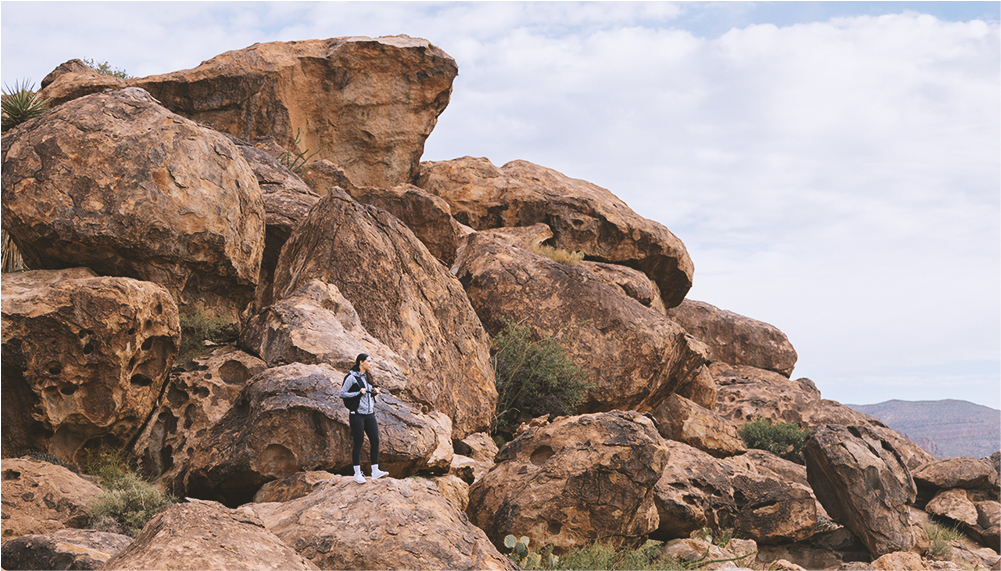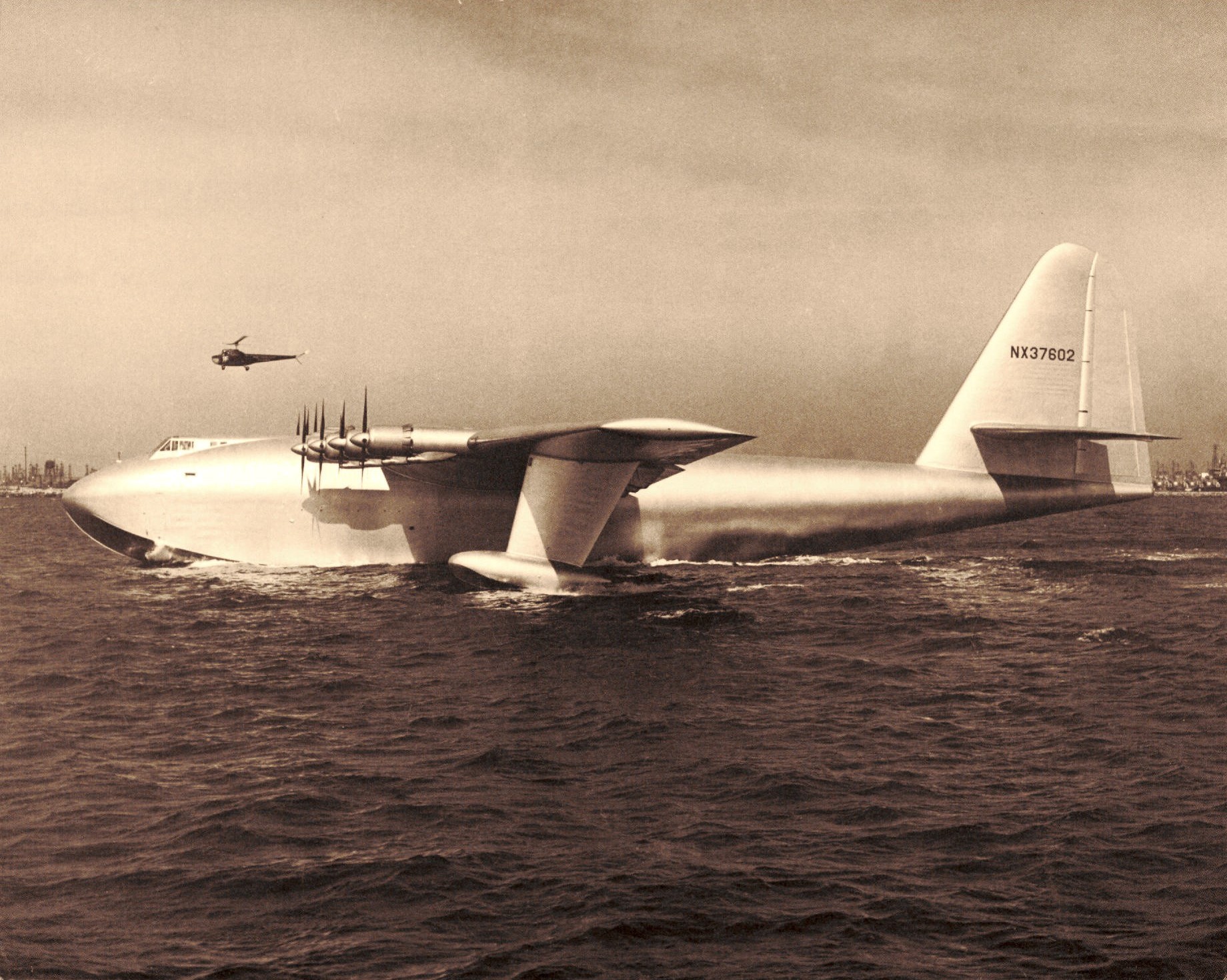

Review flight options, hotel accommodations, rental vehicles, and excursions all in one place. Start planning your El Paso adventure now.
The Hughes H-4 Hercules (commonly known as the Spruce Goose; registration NX37602) is a prototype strategic airlift flying boat designed and built by the Hughes Aircraft Company. Intended as a transatlantic flight transport for use during World War II, it was not completed in time to be used in the war. The aircraft made only one brief flight, on November 2, 1947, and the project never advanced beyond the prototype.
In 1942, the U.S. War Department needed to transport war materiel and personnel to Britain. Allied shipping in the Atlantic Ocean was suffering heavy losses to German U-boats, so a requirement was issued for an aircraft that could cross the Atlantic with a large payload. Wartime priorities meant the aircraft could not be made of strategic materials (e.g., aluminum).
The aircraft was the brainchild of Henry J. Kaiser, a leading Liberty ship builder and manufacturer. Kaiser teamed with aircraft designer Howard Hughes to create what would become the largest aircraft yet built. It was designed to carry 150,000 pounds (68,000 kg), 750 fully equipped troops or two 30-ton M4 Sherman tanks. The original designation "HK-1" reflected the Hughes and Kaiser collaboration.

SDASM Archives, Public domain, via Wikimedia Commons
Ben pcc at English Wikipedia, Public domain, via Wikimedia Commons
The HK-1 aircraft contract was issued in 1942 as a development contract and called for three aircraft to be constructed in two years for the war effort. Seven configurations were considered, including twin-hull and single-hull designs with combinations of four, six, and eight wing-mounted engines. The final design chosen was a behemoth, eclipsing any large transport then built. It would be built mostly of wood to conserve metal (its elevators and rudder were fabric-covered), and was nicknamed the Spruce Goose (a name Hughes disliked) or the Flying Lumberyard.
While Kaiser had originated the "flying cargo ship" concept, he did not have an aeronautical background and deferred to Hughes and his designer, Glenn Odekirk. Development dragged on, which frustrated Kaiser, who blamed delays partly on restrictions placed for the acquisition of strategic materials such as aluminum, and partly on Hughes' insistence on "perfection." Construction of the first HK-1 took place 16 months after the receipt of the development contract. Kaiser then withdrew from the project.
Hughes continued the program on his own under the designation H-4 Hercules, signing a new government contract that now limited production to one example. Work proceeded slowly, and the H-4 was not completed until well after the war was over. The plane was built by the Hughes Aircraft Company at Hughes Airport, location of present-day Playa Vista, Los Angeles, California, employing the plywood-and-resin "Duramold" process – a form of composite technology – for the laminated wood construction, which was considered a technological tour de force. The specialized wood veneer was made by Roddis Manufacturing in Marshfield, Wisconsin. Hamilton Roddis had teams of young women ironing the (unusually thin) strong birch wood veneer before shipping to California.
A house moving company transported the airplane on streets to Pier E (now Pier T) in Long Beach, California. They moved it in three large sections: the fuselage, each wing—and a fourth, smaller shipment with tail assembly parts and other smaller assemblies. After Hughes Aircraft completed final assembly, they erected a hangar around the flying boat, with a ramp to launch the H-4 into the harbor.
![]()
By Highflier - Self-made taken at the USAF Museum; Dayton, OH, CC BY-SA 3.0, Link
Hughes returned to California during a break in the Senate hearings to run taxi tests on the H-4. On November 2, 1947, the taxi tests began with Hughes at the controls. His crew included Dave Grant as copilot, two flight engineers, Don Smith and Joe Petrali, 16 mechanics, and two other flight crew. The H-4 also carried seven invited guests from the press corps and an additional seven industry representatives. In total, thirty-six people were on board.
Four reporters left to file stories after the first two taxi runs while the remaining press stayed for the final test run of the day. After picking up speed on the channel facing Cabrillo Beach, the Hercules lifted off, remaining airborne for 26 seconds at 70 ft (21 m) off the water at a speed of 135 miles per hour (217 km/h) for about one mile (1.6 km). At this altitude, the aircraft still experienced ground effect. To Hughes, these tests demonstrated that the (now-unneeded) plane was flight-worthy, and thus worth the use of government funds.
The H-4 never flew again. Its lifting capacity and ceiling were never tested. Afterwards a full-time crew of 300 workers, all sworn to secrecy, maintained the aircraft in flying condition in a climate-controlled hangar. The company reduced the crew to 50 workers in 1962 and then disbanded it after Hughes' death in 1976.
Ownership of the H-4 was disputed by the U.S. government, which had contracted for its construction. In the mid-1970s, an agreement was reached whereby the Smithsonian Institution's National Air and Space Museum would receive the Hughes H-1 Racer and section of the H-4's wing, the Summa Corporation would pay $700,000 and receive ownership of the H-4, the U.S. government would cede any rights, and the aircraft would be protected "from commercial exploitation."